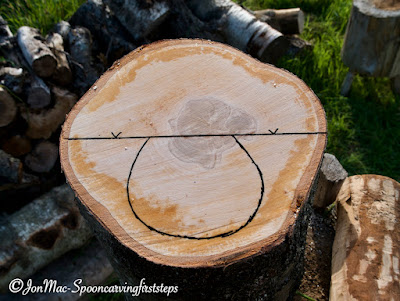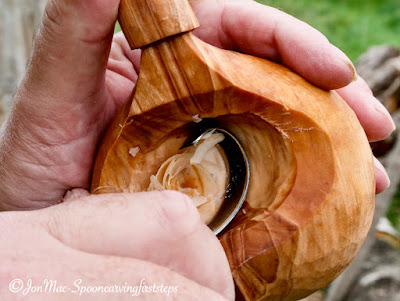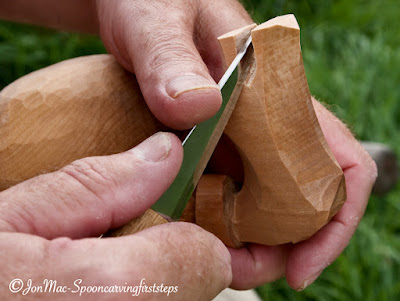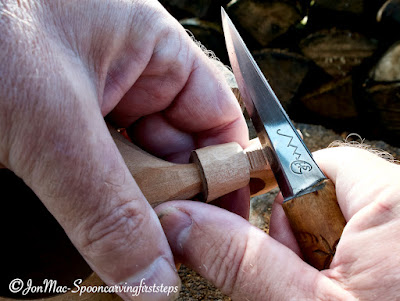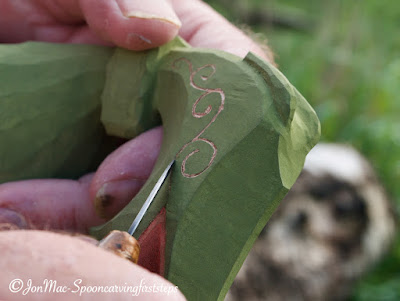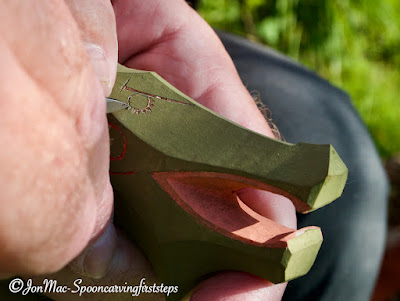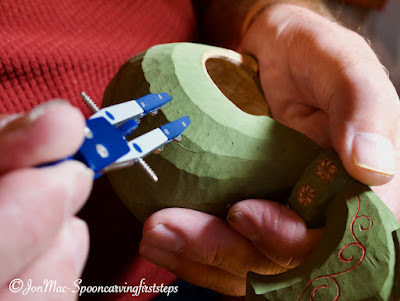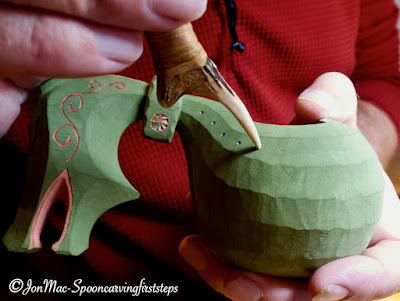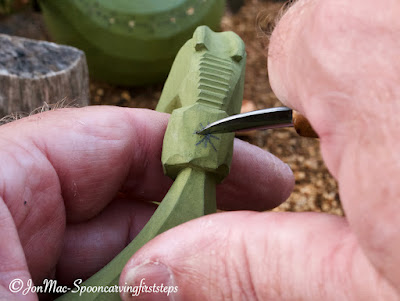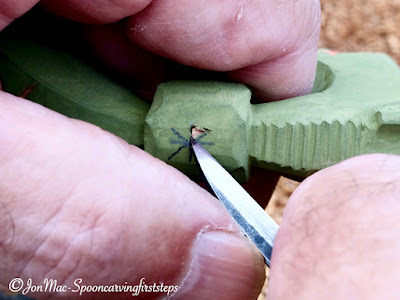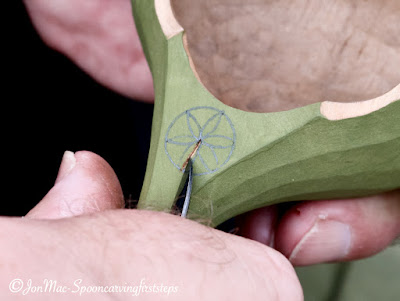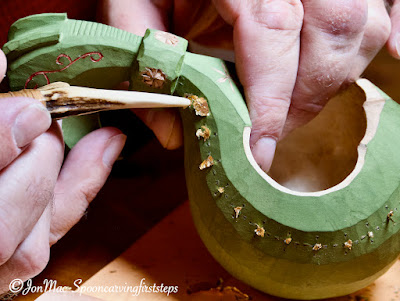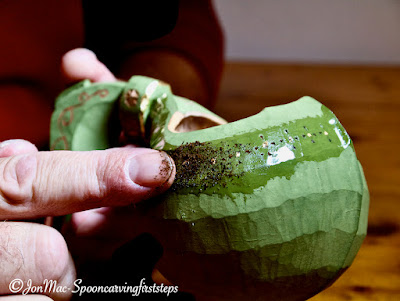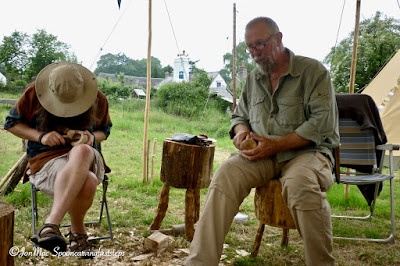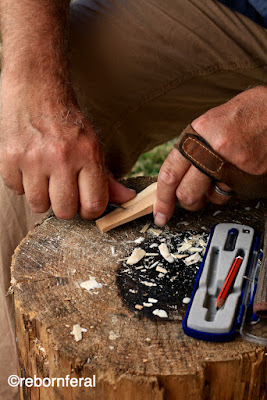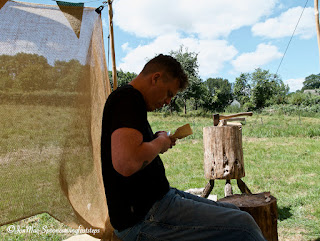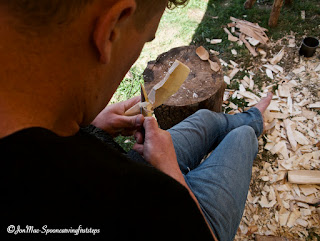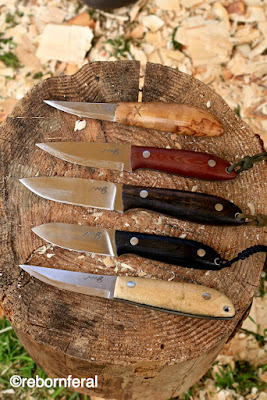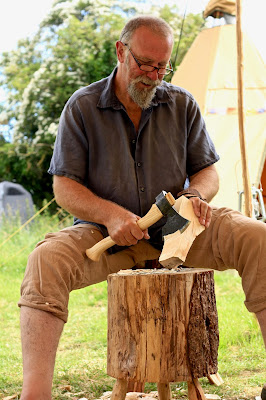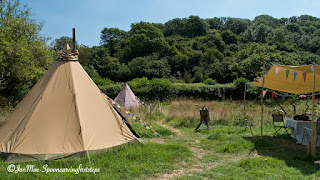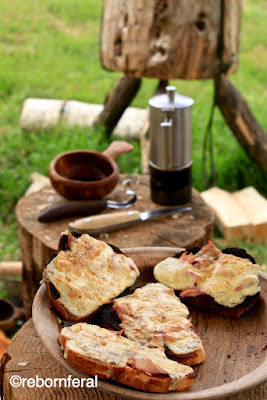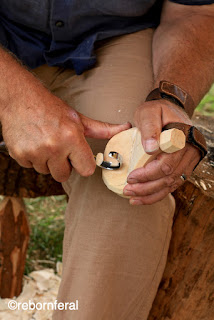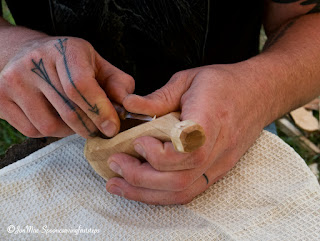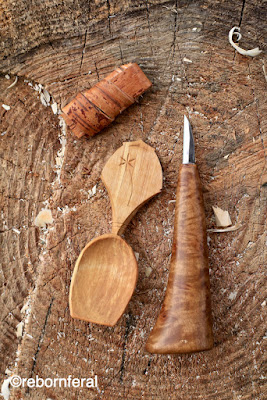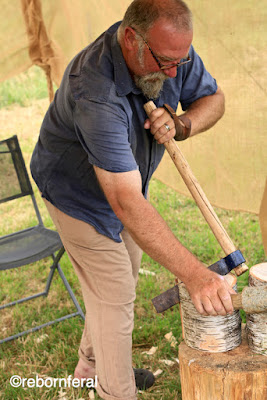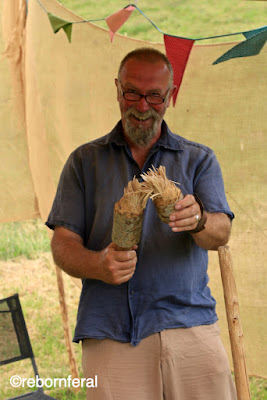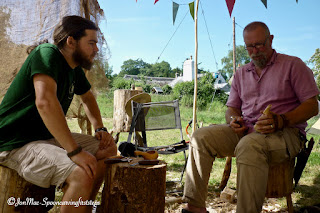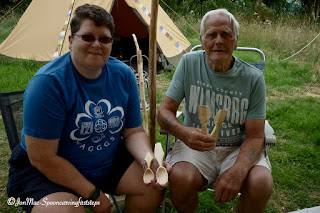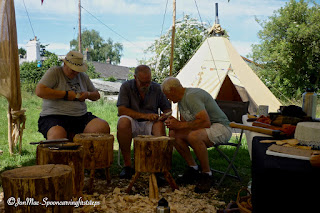Carving a Dragon Kuksa.
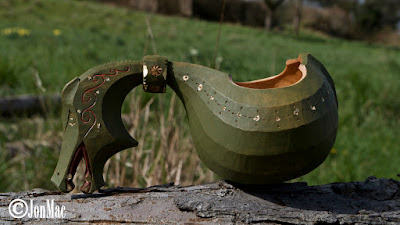
I have been carving Kuksa from green Birch for 15 years or so, I’m self taught. From the beginning, I limited myself to a handful of tools, Axe, knife and hook knife plus a few bits and pieces to keep everything sharp. I’m a hiker and hillwalker and the tools I use are portable and useful at camp. For some time I carved Kuksa with simple lines, but there came a time when I wanted to stretch my skills. I started to carve stylised Ale Hens and then applied what I learned from those projects to a more compact, small drinking vessel, a Kuksa. I added a few more tools to my pack, a small detail knife, a folding pull saw and a small length of Deer antler. All of my carvings, whether Kuksa or spoon, are undertaken “in hand” so no holdfast or vice are required. Now, the carve I am about to describe is a little more involved and will require a few more bits and pieces. Here’s a tool list.
The kit list includes cheap brand Blu Tack, use this for removing pencil marks. The cheaper brands seem to be a little more effective. The kebab stick or sharpened match stick is used for dabbing gilding paste into eye sockets, nostrils, bowl rim and collar decoration. The gilding paste is used to glue on the gold leaf. The Tung oil is to seal the carve once completed. The main carving tools are self explanatory. At any time during the carve, up until the salt water boil, you can pop the carve into a bucket of water or a stream overnight to keep the carve wet which will inhibit cracking. Carve in the shade and don’t let the carve dry too quickly.
The first thing you’ll need is a length of clean ( no knots ) Birch or similar suitable wood approximately 6” to 8” diameter and 8’ long. Split in half lengthways making sure one half is free of knots. From this billet you need to Axe out a teardrop shape, first Axe the neck then round off the back and underside of the bowl. Reduce the size of the blank until it fits comfortably in your hand. Leave a little wriggle room on the blank to allow you to centre up and add details later on.
Carefully Axe out a ‘V’ cut to allow the neck to be formed at a point measured from the rear of the bowl equal to the width of the bowl, Axe out the top of the bowl to allow for a sweeping bowl rim. Once you have started the ‘V’ cut for the neck and have achieved a suitable depth, switch to using your knife and start forming the neck shape. For ease of description we’ll call this the inner neck. Use sweeping curved slicing cuts.
Once the inner neck reaches completion you can now pay attention to the Dragon’s face, this is formed using the same sweeping cuts with the knife set at 45 degrees across the grain. Don’t be afraid to saw away any excess wood with your pull saw before you start, there will undoubtably be some. You will now pay attention to the sweep of the Dragons neck from the collar, over the top of its head and down to its face. The sweep needs to be graceful and higher than the lip of the bowl, you should have enough space to lower the bowl lip if need be.
Once you have the Kuksa hollowed with a wall thickness of approximately 1/2 “ on the lower wall, tapering to 1/4 “ at the rim, stop.......
The next step has no accompanying photos. You’ll need a saucepan or pot big enough to accommodate the Kuksa. Pop the Kuksa in a pot and cover it with water, add three or so tablespoons of salt, pop the pan on the stove and bring the water to the boil, simmer the Kuksa for an hour or so. The water should take on a light brown colour after a time. Remove the Kuksa and let it sit over night. In the morning the Kuksa should be cool but wet to the touch, dry the outer with a towel and start carving the planking, you’ll find fairly dry wood quite quickly.
To make the planking effect, start at the lip of the bowl and carefully, with your knife, plane a flat edge starting from the Dragons collar running right round the bowl back to the collar. Tidy this first plank and move down to the next. It will soon become obvious that you can tidy up the width of the first plank by altering the top of the second plank. Keep moving round the Kuksa, adding planks as you go. You may find that the Kuksa is still a little damp, you can go over the planking once more with a re sharpened knife later on when dryer.
Next, cut out the Dragon mouth starting with a ‘V’ cut and carefully working the opening with twisting cuts using the tip of your knife. Note later photographs where you can see I’ve left a triangular tooth like shape at the mouth opening.
You can also start cutting in the Dragon horns at the top of the head. Make them simple and not too fragile.
You will now need to re visit the bowl inner, cleaning it up and introducing the undercut at the lip. Once you are happy with the undercut, you can start to tidy the rim of the Kuksa. Once the rim has been tidied up, it is difficult to re visit the inner as you will damage the rim in the process.
You’ll need to cut in its mane using tiny ‘V’ cuts and pop a little detail around its mouth using your chosen detail knife. You might also want to add a little scalloping around the collar, do this with your small detail knife making a dish shaped cut.
You should now have the basis of a Dragon Kuksa which will need a few bits and pieces of detail adding before it gets a coat or two of paint. The Kuksa will still be “Green”, however, boiling it in salt water will speed up the drying time and relax the wood. So wait a week or so before painting and oiling
Once you’ve tidied everything up and the Kuksa is dry, you can commence painting your Kuksa with milk paint. Be sparing as you don’t need a large amount, a tablespoon or two of warm water should get the job done. Mix in the powdered paint a teaspoon tip at a time to make a watery wash. Follow the instructions that come with the paint, but don’t make it too thick.
You may wish to add some chip carving around the collar and a little decoration around the rim of the Kuksa. Use a compass to mark out the rim decorations, usually the second plank down is best. Mark around the rim leaving enough space between marks to add some stab carving in between. The compass marks can then be made permanent by using a round ended bone or antler pressed into the wood. Make the triangular stab cuts with the point of a Scandinavian ground blade.
The decoration on the collar is made by marking out a small eight tipped star shape, using your small detail blade you make three cuts. The first from tip to centre, rocking the blade in.
and two sweeping cuts on both sides.
The next step is to add your gold leaf. With the point of a kebab stick or sharpened match, drop a spot of gilding paste into the dents you made around the rim, pop some on the teeth and the little scallops you made around the collar. Let it dry so it’s sticky to the touch, then with your trusty antler apply the gold leaf. Just lick the tip of the antler to pick up the leaf. It’ll look messy at first, press it on with clean fingers and let it dry. Once dry, brush the excess away with a soft brush.
The final thing now is to find some fine ground coffee beans, or fine ground dry coffee grouts. With your finger or a rag, oil over the band of stab carving around the lip of the Kulsa, then rub the grouts into the oil, wipe off and you should be left with little black triangles surrounding your gold leaf dots
Enjoy... J
